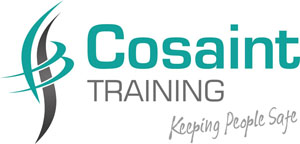Legionella and Legionnaires’ Disease Awareness Training
[ HALF DAY ]
Legionella bacteria have the potential to cause serious harm to people’s health if they are not carefully controlled. As a result, all premises containing a man-made water system must ensure that the system is safe to use, regularly maintained and free from harmful bacteria.
This Legionella and Legionnaires’ Disease Awareness course aims to help dutyholders to understand more about their legal responsibilities, and the health risks created by legionella bacteria, so that a risk assessment can be done and suitable control measures can be implemented.
Who Should Take This Course?
This course is suitable for anyone in charge of a premises (known as the dutyholder) no matter how big or small the premises and regardless of the number of people present. This includes all employers, self-employed people and anyone else in control of a premises, such as landlords and letting agents.
Landlords have an obligation to be aware of the dangers of legionella and ensure a risk assessment is done to keep their tenants from harm. This course provides details on how to carry out a risk assessment and explains what should be included so that you have an awareness of how to identify legionella hazards and react appropriately.
COURSE CONTENT
The course is divided into 5 modules:
- What is Legionella? – what legionella is and where it comes from, how people get legionnaires’ disease, who is most at risk, symptoms and treatment of legionnaires’ disease.
- Legal Responsibilities – health and safety legislation, COSHH regulations, Notification regulations, RIDDOR, landlord responsibilities, employee responsibilities, designers, manufacturers, importers, suppliers and installers and the HSE Approved Code of Practice L8.
- Hazardous Environments – where legionella is found, what is meant by a water system, assessing the risks, cooling systems, hot and cold water systems, spa pools, other risk systems and the main risk factors.
- Legionella Risk Assessment – what a risk assessment is, competence, identifying the hazards, schematic diagrams, deciding who might be harmed and how, consulting employees, evaluating the risks and implementing controls, recording findings and reviewing and updating the assessment.
- Controlling the Risks – dutyholder responsibilities, training, instruction and communication, employee responsibilities, the written scheme, key precautions, operation of the water system, monitoring and inspection, testing water quality, cleaning and disinfection, controlling water systems in residential settings and avoiding stagnation.
ASSESSMENT
Assessment is through individual and group exercises and an end-of-course multiple-choice test.
Half Day
Cosaint Training / On Site
Each trainee will receive a certificate of attendance on completion.
Tea, Coffee & Light refreshments provided
